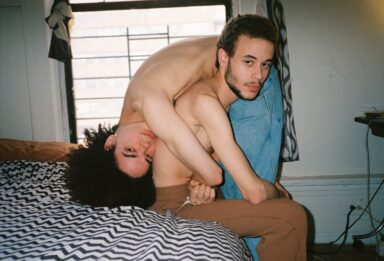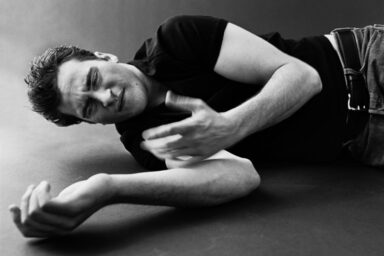SUJATRO GHOSH WAS FORCED TO ESCAPE FROM HIS HOMECOUNTRY. READ THE INTERVIEW TO THE INDIAN ARTIST FEATURED ON OUR 7TH ISSUE
In 2017 Dry interviewed the Indian photographer Sujatro Ghosh on the occasion of the launch of his personal “Cow Mask” project. Now, two years after, the very artist was forced to move in Berlin and escape from his homecountry because of the several threats come from Hindu fanatics.
Read the interview featured on “Escape to be” issue and get ready for the up-coming docu film that will narrate next January Ghosh’s photography project.
ARE COWS WORTH MORE THAN WOMEN?
Interview by: Teodora Malavenda
Cow Mask is a new project by Indian photographer Sujatro Ghosh. Within a few months of its inauguration, these pictures by Ghosh, a young artist born and raised in Calcutta, have traveled the world over, going viral across the social webpages of thousands of users. People have been drawn to the photo series’ particular subject: violence against women, a theme that remains as universal for mankind as it is omnipresent in our societies. In India, one of the world’s leading democratic powers, experts estimate that a woman is raped once every 30 minutes, numbers that highlight a very dramatic cultural issue within a society that all-too-often continues to tolerate this kind of abuse. In Sujatro’s series, the faces of women portrayed are always covered masks representing cows, animals the Hindus consider sacred; a creature that must be respected and protected more decisively than a daughter, wife or female friend. DRY interviewed Ghosh, currently working on a sequel to the project, to hear more about the origins of his idea and the context in which he developed it.
TEODORA: Tell us more about your project… How did it start, and why?
SUJATRO: I have been working with women’s rights and several charity organizations for many years now. My sensitivity for this longstanding problem gave birth to the Cow Mask project, specifically after the rise of the right wing in India. Because of the right wing government and right wing ideologies, cow vigilante groups have risen in power, leading to religious attacks on minority religions. The concept behind Cow Mask is to visually illustrate the dichotomy underlying our misplaced priorities. Today the chances of delivering (almost immediate) justice for a cow that has been harmed is several degrees higher than it is for a woman who has been raped, molested, harmed or has experienced domestic violence. My idea was to create awareness by photographing women in public and private spaces wearing cow masks in order to ask the question: “Do women really have to be cows in order to feel safe in this country?”. The context surrounding Cow Mask is India’s current socio-political scenario, but my fight against patriarchal societies has been ongoing for a long time, and the project definitely speaks for women worldwide, not just in India.
T: Obviously your project was designed to raise public awareness about an important issue. Do you believe photography can be a means of protest?
S: Art is a very powerful tool for change, and I’ve witnessed the impact of my project firsthand. So yes, I believe photography can be a very effective means of protest. I believe it plays a big role in forming opinions, educating us about truth and transforming mindsets. When art reflects the times we live in, it can definitely bring about positive changes in people.
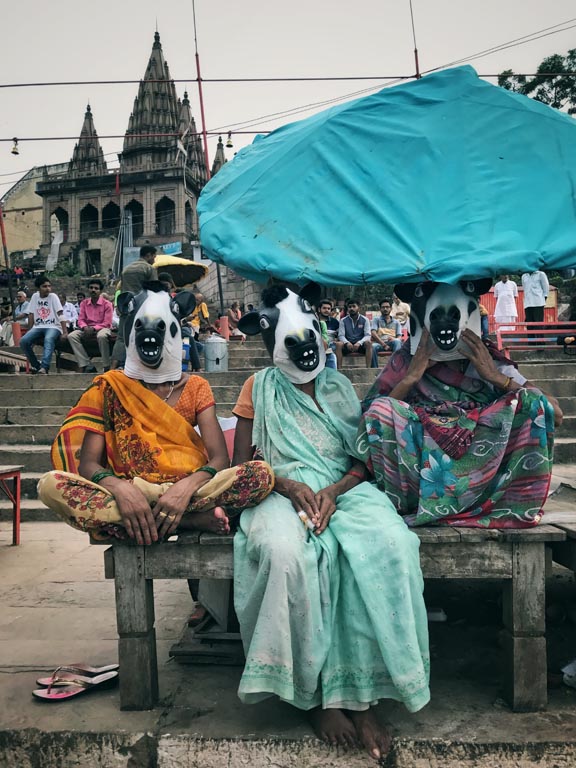
T: What does it mean to be born female in India today?
S: Honestly, I believe I am in no position to answer this question. Being a man, I cannot for one moment pretend to completely understand the struggles women go through in today’s world, and not just in India. Inequality is present in almost every sphere of daily life, from inequality in wages, to something as basic as lack of inclusivity in decision-making processes at work, at home, and almost everywhere else. Even elections to public office and the parliament reflect major inequality between the two sexes. The United States of America has not had a single woman president to date. I am aware of the various gender-based acts of violence and injustices women endure, and I vouch to stand alongside them and fight for justice for as long as I can. It will always be my honor to do so.
T: Don’t you think that the issue of Indian women’s rights is a matter that should concern women of all nationalities, religions and skin colors?
S: The contexts in which Indian women’s rights or Indian feminist movements are set are completely different to that of their counterparts in the West, or any other country for that matter. For example, the Suffragists and the Suffragettes began their fight for justice with the issue of voting rights for women. But we never really had to fight for our voting rights; we already had them. Similarly, the fight to abolish Sati (widow immolation on a husband’s funeral pyre) before and during India’s struggle for independence, or the battle to enact a law that criminalizes giving or accepting dowries post independence are matters specific to India. I don’t see how it would be possible to universalize feminist struggles when the struggles for certain women’s rights are set in contexts specific to the practices of particular nations. Having said that, I also find it necessary to state that any feminist struggle or movement in any country anywhere in the world inherently involves the burden of fighting against a patriarchal system that affects all of us. Fighting against patriarchy and its ill effects (which are then contextualized within specific countries or societies) may therefore be the larger universal struggle that unites feminists (women and men of various nationalities, religions and skin colors) the world over.
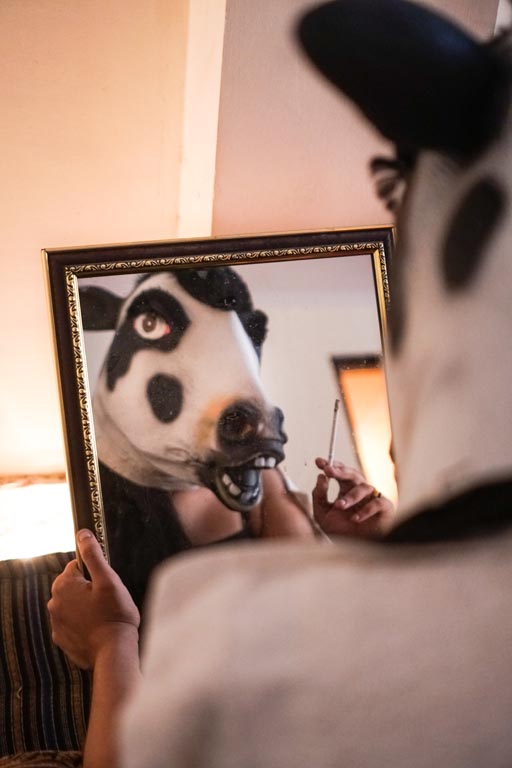
T: When and how did you first recognize this “disparity” between women and cows?
S: Hindus consider cows sacred animals in India, and there are cow vigilantes who look protect them. (They became more active after the right wing government’s rise to power in 2014.) On the other hand a woman is reported raped once every fifteen minutes in India! This statistic made me think about the security of women in our country, though it’s really a global problem. That’s where the project started and I drew a connection between the two issues.
T: What do you think are the cultural, political and religious reasons that keep women from earning the same respect as men in India?
S: In India cultural, religious and political elements are an ongoing mix, often flowing in and out of one another. Each one affects the others in turn. One of the major sources of inequality for women in India is the entirely religious Brahmin caste system, which has practiced for centuries. For thousands of years, only upper-caste Hindu males have enjoyed the right to an education. Even though laws have now been put to place to combat this (abolition of caste discrimination and the Fundamental Right to Education for all), the effects and the repercussions of millennial practices continue to affect us all.
Many social problems stem from the cultural practices of Hindu marriage, for example dowries, child marriage, unemployment of women due to their lack of opportunity to join the public workforce. This is true in other religions too. Dowries led to a rise in female infanticide. Relegating women to a purely domestic role was born of interpretation of religious texts. In one religion women were idolized, given “godly” status and leading to the need to “protect” them as divinities; in other religions there is clear talk of how it’s a woman’s “duty” to serve her husband at all times.
Beliefs like these eventually led to political issues, like female underrepresentation in public offices and the parliament. The most striking example is how our Women’s Reservation Bill, which proposed 33.3% reservation for women at each level of legislative decisionmaking from the Lok Sabha down to state and local legislatures, still hasn’t been made into a law even though it was introduced in parliament two decades ago! Political parties fear that if 33.3% of the seats were reserved for women, many male leaders wouldn’t stand a chance in the elections. This is a direct effect of patriarchal attitudes that remain widespread in our society.
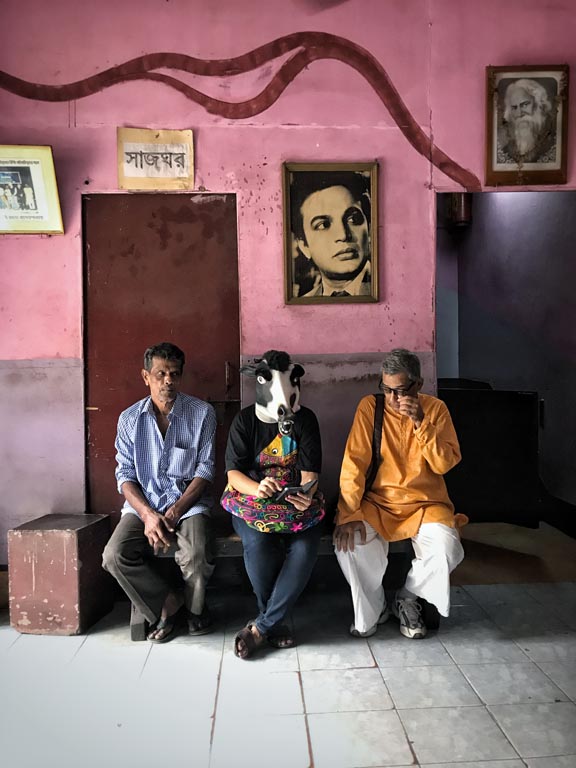
T: Is there a connection between the subjects photographed and their locations?
S: Yes, there is a link. When I started photographing the women, I did so in places where they wanted to be photographed. Those were usually places where they felt unsafe and where they faced daily incidents. India’s Parliament would like to introduce the death penalty for those who torture animals. I imagine there are also political groups proposing greater justice for raped women. Am I right? Bills have been passed that talk of giving the death penalty to those who slaughter cows (the Cow Protection Bill, 2017, by Dr. Subhramaniam Swamy). While I find this outrageous, I don’t believe capital punishment can be the solution to any crime committed, be it against any living being. After all, how many will you kill? We need to work on mindsets, on the mentality of the people in order to bring about change. I’m also not aware of any political group that has proposed more justice for women against whom violence has been committed.
T: How do people in India react when they see your project?
S: Cow Mask has already gained momentum and has effectively managed to challenge the status quo of our current socio-political situation. Students, youngsters and women who have dealt with violence and rape, as well as elderly and civil society organizations, and organizations working to combat women trafficking have all expressed their support for this cause. At the same time, political and religious extremists and fundamentalists have been upset at what they see as art threatening their beliefs. Responses from across the globe, both positive and negative, have fueled the need to keep moving forward and trying to make a positive impact on people’s lives.
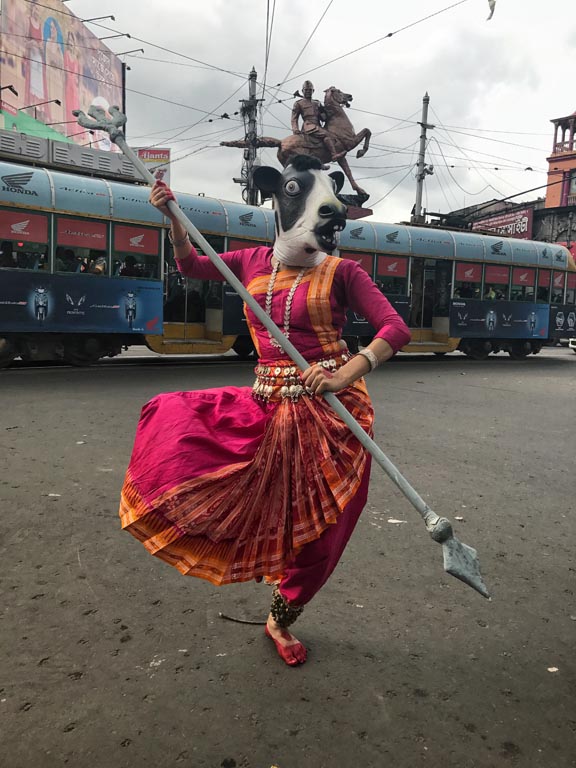
T: What will you do next? How do you want to move forward with the project?
S: The overwhelming responses and feedback we received inspired the effort to expand the project in various other locations across India. The idea behind this second phase of Cow Mask is to use powerful images and photography to generate an active discourse at various levels of society, addressing the need to give women justice and ensure safety and security everywhere and at all times. It is also important that what began as a personal venture now be passed on and become a full-fledged people’s project through women’s participation and collaboration at several levels. Therefore written documentation of the entire journey is a major component of the second phase. It will seek to let oppressed and marginalized women voice their concerns; to narrate the stories of those who have been delayed justice for crimes committed against them through a fascinating interplay of words and images. From tribal women to adolescent slum dwellers in the big city; from a small town homemaker to the urban businesswoman, each and every voice is vitally important and needs to be expressed, heard, documented and studied.
Cover: Cow Mask, Photo Sujatro Ghosh

